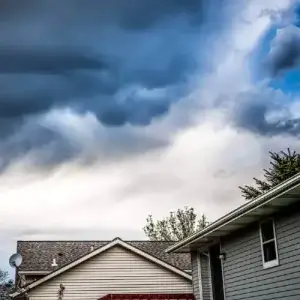Home / Compare Home And Content… / Flood cover in home insu…
Flood cover in home insurance
Don’t get caught out during storm season. Compare home and contents insurance policies in just minutes.






Key takeaways
- ‘Flood insurance’ isn’t a standalone product, but it may be used as a blanket term for home insurance policies with flood cover.
- Depending on your insurer, flood cover may be available as a standard or optional benefit.
- If you need emergency assistance services in a flood event, call 000 or the SES immediately.
Flood cover explained by David Koch
Kochie discusses flood cover and shares top tips for protecting your home and possessions.


We work so hard for our homes. It makes sense to protect them in every way we can! Screen doors and security cameras have become popular options – but when natural disasters like floods are a threat, what defence do we have? That’s where flood cover comes in.
When you have flood cover on your home and contents policy, you get the peace of mind that no matter what happens, your home and personal belongings could be covered for flood damage. However, some things are irreplaceable and prevention is often better than cure. So here are Compare the Market’s top tips on protecting your home and belongings for storm and flood damage. It all starts with the purchase of your home.
Before you sign the papers, check the local flood maps to see if the property is in a high-risk area. If it is, you could consider a proper building inspection to know how it’s held up in the past. Next, it’s crucial to keep on top of maintenance. Things like cleaning out your gutters and keeping your roof up to scratch make a big difference.
And when a storm is about to hit, keep an eye out for warnings, visit your local sandbag collection area, and keep an emergency kit on hand, just in case. Most importantly, make sure you have adequate cover well before disaster strikes. Insurers can put embargos in place that could prevent you from purchasing insurance if your area is at risk, so get insured before it’s too late. With Compare the Market, you can review a range of options side-by-side and look for important inclusions, like flood cover.
It always pays to compare so start your journey today, with Compare the Market.
What you need to know about floods
What is a flood?
Floods are generally defined as instances where dry land is covered by water that escapes from lakes, rivers, creeks, reservoirs, canals or dams.1
You can find your insurer’s definition of a flood by reading the relevant Product Disclosure Statement (PDS).
How do I know if I live in a flood zone?
 Local councils and state government websites typically have flood maps that you check to better understand the risk of flooding for specific properties.
Local councils and state government websites typically have flood maps that you check to better understand the risk of flooding for specific properties.
Depending on where you live, the following could help you find out if your property is at risk of flooding:
Insurance cover for floods
Is flooding covered by home insurance?
Some insurers offer flood cover as a standard inclusion in home insurance policies, but others may offer it as an optional extra. You can find out if a policy has flood cover and other benefits by reading the PDS.
Does my property require flood insurance?
There’s generally no legal requirement for you to have flood cover or even a home insurance policy in general. However, a home and contents policy may provide financial protection for your home and possessions if they’re damaged or destroyed by floods or other insured events.
Can I get insurance in a flood zone?
It can vary depending on the insurer and the area you live in. Some insurance providers may offer home insurance for properties in flood-prone areas, while others might deem these properties as too much of a risk to insure.
If you live in a flood-prone area, consider comparing your options to see what might be available for your home.
How can I find out whether I’m covered for a flood?
If you already have home insurance, you can find out if you’re covered for floods by reading the PDS of your current policy or contacting your insurer.
When should I get flood cover?
If you’re considering flood cover, it may be beneficial to consider adding it to your policy as soon as possible.
During weather events, insurers usually put embargos on home insurance policies, to ensure people aren’t just buying cover to immediately claim on it. This means you might not be able to purchase cover for a certain period before and after an insured event like a flood or cyclone.
By purchasing cover sooner rather than later, you could avoid a potential embargo when the next flood event happens.
Can renters and tenants get flood insurance?
Tenants can purchase contents insurance with flood cover to safeguard the items in their home. However, cover for the home building is the responsibility of the landlord.
How do flood cover claims work?
Flood insurance claims work like other home insurance claims. After you lodge your claim, your insurer will contact you and may send a representative to assess the damage. If your claim is successful, you’ll receive a settlement from your insurance company.
If your claim was unsuccessful or you disagree with the settlement outcome, you can dispute this first with your insurer’s complaints resolution process, and then, if you are still unhappy with the outcome, through the Australian Financial Complaints Authority (AFCA) if necessary.
Flood cover inclusions and exclusions
Please note that this is just a guide. To find out more about what your home insurance policy covers, always read the PDS. The Target Market Determination (TMD) could also help you figure out if the policy if right for your circumstances.
Inclusions
Flood cover typically offers financial protection from flooding that occurs from:
- Lakes
- Rivers
- Creeks
- Reservoirs
- Canals
- Dams.
It may also cover damage that occurs from rainwater run-off.
Exclusions
Generally, flood cover excludes instances where damage is caused by:
- Actions of the sea (e.g. tsunamis, high tides, sea level rises)
- Water that entered your home because of renovations
- Underground water seepage or pressure
- Hydrostatic pressure
- Soil movements that didn’t occur immediately after a flood or rainwater run-off.
How much does home insurance with flood cover cost?
 The amount you’ll pay for home insurance with flood cover is generally determined by the risk of flooding or water damage at your property. As a result, your location could have a significant impact on your premiums.
The amount you’ll pay for home insurance with flood cover is generally determined by the risk of flooding or water damage at your property. As a result, your location could have a significant impact on your premiums.
Some other factors that may influence how much you pay for home insurance premiums include:
- The type of cover you purchase
- Any optional extras you add to your policy
- The age of your home.
The excess amount on your policy could also impact your premiums. For example, opting for a higher excess on your cover could lower your premiums and vice versa. Before increasing your excess, ensure it’s an amount you can afford to pay if you need to make a claim.
Meet our home and contents insurance expert, Adrian Taylor
As a General Insurance expert with over 13 years’ experience in financial services, Adrian Taylor works to make it easier for homeowners, renters and landlords to protect their home and contents. He believes it’s important for all residents (whether they rent, own or lease) to have adequate financial cover for their property and belongings in case the worse should happen.
Learn more about home and contents insurance
1 Australian Government Bureau of Meteorology. Understanding floods. Accessed July 2025.